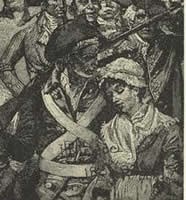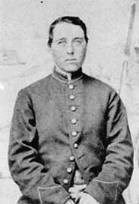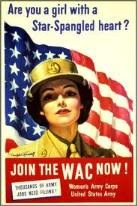
New York Public Library Women have always played an important role in war, and not just on the home front. During the Revolutionary War, for example, some women applied their homemaking skills to reconnaissance work.On both the American and British sides, housewives and young girls were enlisted as maids and cooks for the military. Because they had access to military camps, they could eavesdrop on private conversations concerning anything from equipment deliveries to leadership transfers, and deliver that information to the other side. One spy whose role was only recently discovered is known only as "355." She was a part of a spy ring called Culper, and she delivered accurate information toGeorge Washington, helped expose Benedict Arnold, and aided in the arrest of Major John André, head of England's Intelligence Operations in New York.
Indiana Commission for Women During the long, horrendous Civil War, women worked as spies for both the North and South. Two of the most well-known were Elizabeth Van Lew and her servant and former slave, Mary Elizabeth Bowser. Bowser was hired as a servant in the home of Confederate President Jefferson Davis. Davis assumed Bowser was illiterate, and left important paperwork on his desk, which Bowser read, memorized, and relayed to Union officers.Other women in the Civil War were Vivandieres, and some even cross-dressed to be able to join the fighting. Vivandieres were women who followed the men onto the battlefield and provided supplies and medical attention when needed. Some Vivandieres were armed for self-defense, such as Sarah Taylor, who carried a sword, rifle and a pistol. But other women, like Sarah Wakeman and Jennie Hodgers, dressed up as men in order to serve in the military on the frontlines. 
Over 30,000 American women served in the U.S. Military's nursing units in W.W. I. They were also drivers who decrypted and translated valuable information. The Army Signal Corps also recruited women for overseas duty as "Hello Girls." These women were bilingual telephone switchboard operators. By the Second World War, women, for the first time, became enlisted soldiers and officers in the U.S. Military. The Women's Auxiliary Army Corps (WAAC) was created in 1942. A year later, Congress, impressed by the professionalism and dedication of the WAAC, permitted women to enlist as soldiers in the Women's Army Corps (WAC). 
WAC soldiers were sworn in in the same way as their male counterparts, were sent in as reinforcements, and were even held as POWs in places such as Japan. A WAC unit was established on Governors Island in 1946. In the barracks in which they lived, the women in the WAC would sleep, eat, and go to classes, and they even had their own salon and date room, where they could entertain male guests. Among their duties, the WAC unit on Governors Island provided mail services [to Governors Island?] throughout WWII and thereafter. Throughout the centuries, the makeup of the Army reflected Society. Back then most of the races were segregated, and so was the Army, including the WACs. There were Black units, Asian units, Puerto Rican WAC units, and a Native American unit. But soon, segregationpractices changed in America, and women and minorities served their country alongside their counterparts.
|
Last updated: February 26, 2015
